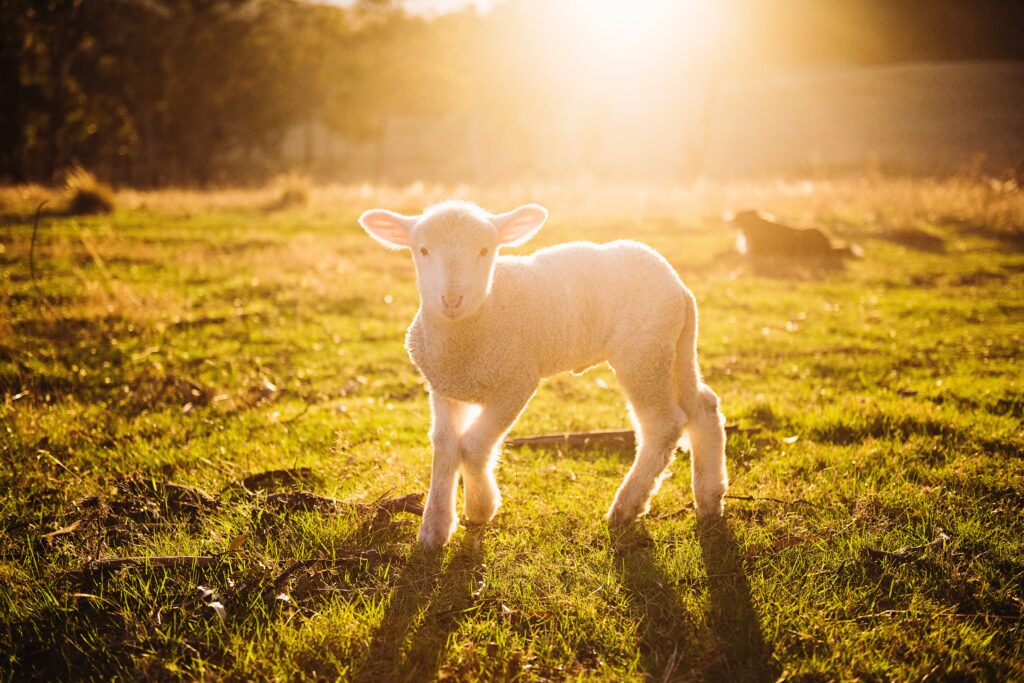As the term suggests, agroforestry involves establishing trees and other woody perennial plants on an agricultural area to take advantage of the positive interactions between the two components. Here, the area under the trees can be used either for horticultural and arable crops (silvoarable system) or as pasture (silvopastoral system). A combination of both is also possible. The aim is to enhance the fields economically, ecologically and also aesthetically.
What appears to be an innovative concept is in fact an ancient form of land use that was also used on a large scale in Germany until the 19th century, for example in the form of meadow orchards and hay forests. It was not until progressive rationalisation and intensification that trees were regarded as “disturbing factors” and largely removed from the fields.

Dissemination and research
In other parts of the world, especially in the tropics and subtropics, agroforestry is considerably more important than in Germany. In Europe, for example, agrosilvopastoral land, where pigs are kept under holm and cork oak has a long tradition in Spain. In France, agroforestry land has increased in the last ten years. Research there is also dealing intensively with the topic.
The University of Giessen wants to go one step further and integrate agroforestry on its teaching and experimental plots.
“For our teaching and experimental farm Gladbacherhof, we are thinking about adapted land use using agroforestry and the characteristics of organic animal-plant systems to develop resilient agricultural systems from it,”
says Andreas Gattinger, professor of organic agriculture.

Advantages of agroforestry as an element of regenerative agriculture
The drought year 2018 has also shown in Germany that a reorientation in agriculture towards sustainable models is necessary. The concept of “regenerative agriculture”, which is essentially oriented towards understanding and imitating natural processes, offers possible solutions. The grazing behaviour of wild herbivorous flocks or the occurrence of perennial plants in ecosystems serve as models. Modern agroforestry systems can, for example, improve soil fertility, water quality, biodiversity and the microclimate. On the one hand, soil fertility is increased by more closed nutrient cycles between arable crops and woody plants. On the other hand, through leaf fall and dead fine roots as well as root exudates, carbon is increasingly stored, humus is enriched and thus soil quality is increased in the long term.
In addition, through management measures, the trees can be educated to form deeper roots (up to 35 metres) and thus act as a water and nutrient pump. The root system also absorbs excess nitrate, contributing to groundwater protection.
The microclimate prevailing at the site can change positively, as the trees and hedges both protect against wind and provide shade. This leads to less erosion and drying out of the soil and the undercrop.
Furthermore, agroforestry systems help to increase biodiversity, as they provide a habitat for many different creatures. This diversity contributes to a stable, healthy overall system.

Higher land productivity with better site adaptation
In addition to the positive effects on the ecosystem mentioned above, agroforestry systems can also bring economic and social benefits.
Compared to pure stands, cultivation forms with plants of different growth heights make more extensive use of the solar radiation on the area. There is a larger photosynthetically active area, so that more biomass can be formed. In the trial plots in southern France, for example, where single-row walnut strips were combined with wheat, a yield was achieved on 100 hectares of agroforestry area that would have required 140 hectares in pure stands. The trees took up only five percent of the area.
There are many ways in which this type of land use can be adapted to the demands of the farmer, but also to the conditions of the particular location.
The maintenance of permanent crops takes place primarily in the winter months and is thus in little competition with the working time requirements of other agricultural activities.
Competition, capital commitment and political framework
In addition to these many positive aspects, there are also noteworthy disadvantages. For example, there can be more competition for light, nutrients and water between the different crops on the land. This can have a negative impact on plant growth. To prevent this, agroforestry systems require intensive, long-term planning and sophisticated management.
From an economic point of view, a conversion to agroforestry systems therefore does not appear to be very lucrative so far, as a lot of time and money must first be invested due to long-term capital and land commitment as well as little prospect of subsidies. Especially in the production of valuable timber, these investments only pay off after up to 60 years. At the same time, the amount and timing of the financial return is difficult to calculate.

Modern, efficient and ecological agriculture
Josef Braun, an organic farmer from Freising, is convinced that it is worthwhile to overcome this
“artificial separation of forestry, agriculture and horticulture that we humans have made and to develop networked systems”.
He plants trees himself on his pastures and fields and thus tries to “bring the forest into the field”. In his opinion, modern, efficient and ecological agriculture can be practised with this ancient and traditional system.

